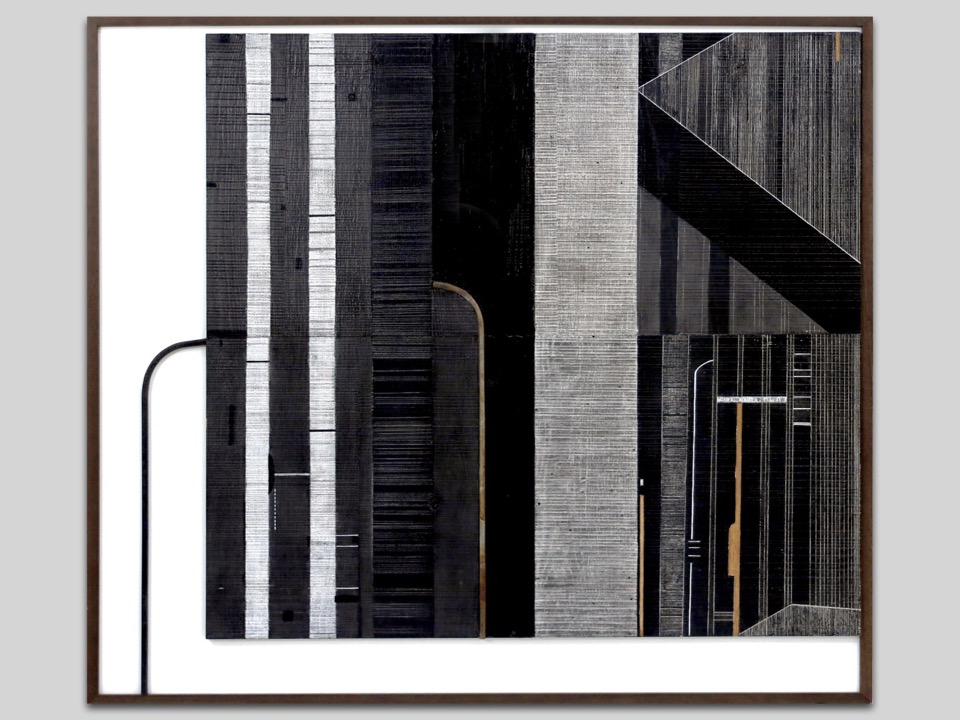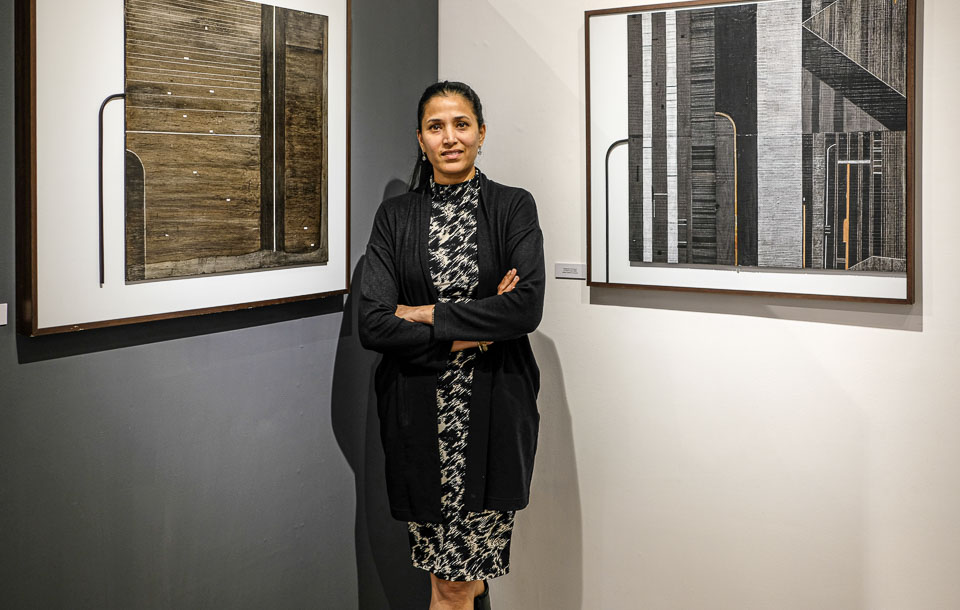Rubkirat draws from architecture, channelling its solidity into abstract compositions. She engages with structure through a meticulous approach, using lines and geometric forms to construct a distinctive artistic language. The Mehrab, a significant architectural feature in Islamic design, informs much of her visual expression.
Her work reflects an affinity for precision and balance. While figurative art mirrors the external world, abstraction distills it into elements of form, space, and rhythm. For Rubkirat, architecture offers a foundation upon which she builds her creative vision. The rigid structures of stone and steel become pathways to introspection. The Mehrab, with its defined yet fluid form, serves as a central motif in her exploration of space and meaning.
This architectural element carries both structural and symbolic weight. As a recess in mosque walls pointing towards Mecca, it provides orientation in spiritual practice. Its form, often arched or rectangular, conveys a sense of harmony. These qualities align with Rubkirat’s practice, where structured compositions embody stability and contemplation.
Her connection to the Mehrab extends beyond its visual aspects. She sees in it a reflection of her own experiences. The structured nature of the motif may represent a search for order amid personal complexities. Its directional essence hints at movement—whether toward understanding, growth, or an internal journey. It acts as a conduit for her thoughts, offering a visual means of expressing ideas rooted in lived experience.

Rubkirat’s process involves deconstructing the Mehrab, analysing its structure and reinterpreting its elements. Through this, she transforms its rigidity into something fluid, where each line and form carries a deeper resonance. The interplay of shapes and patterns speaks to an evolving engagement with tradition, where architectural influences meet personal expression.
The significance of the Mehrab within Islamic heritage adds another dimension to her work. As a focal point in places of worship, it embodies a connection to something greater. By incorporating it into her art, she extends an invitation to contemplation. Her work reaches beyond visual appreciation, encouraging reflection on themes of direction and structure within both physical and personal spaces.
Rubkirat’s art highlights how architectural inspiration can shape abstract expression. By interpreting the Mehrab in her own way, she bridges the tangible and the conceptual. Her compositions challenge viewers to look deeper, beyond surfaces, and to engage with the meanings embedded in both built environments and artistic practice. Through her lens, the Mehrab becomes more than an architectural detail—it emerges as a symbol of alignment, structure, and introspection.
Essay text updated.
